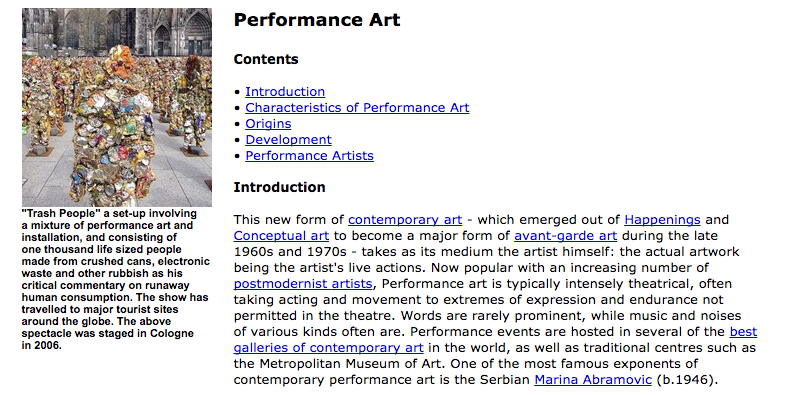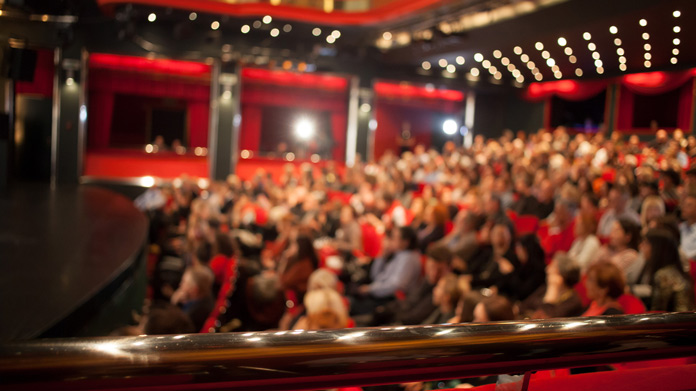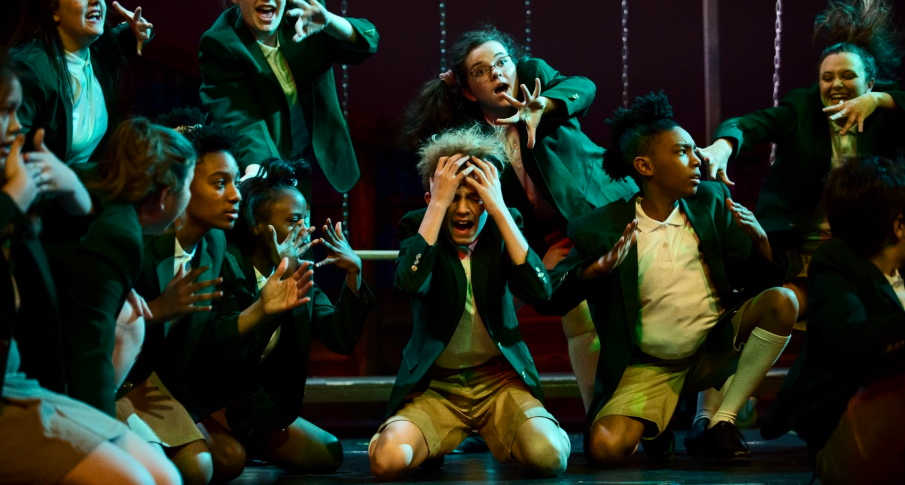Have you ever been captivated by a live performance that left you in awe and wonder? Performance art has the power to stir emotions, challenge conventions, and push boundaries in ways that no other art form can. In this article, we will explore the characteristics of performance art and delve into what makes it such a unique and captivating medium.
Performance art is an immersive and interactive experience that blurs the line between art and life. It encompasses a wide range of artistic practices, including theater, dance, music, and visual arts, all brought together in a live performance. Unlike traditional forms of art, performance art is ephemeral and transitory, existing only in the moment of its creation. It is characterized by its unpredictability, spontaneity, and the element of risk involved. Performers often engage with their audience, inviting them to participate or become part of the artwork itself. This interactive quality creates a dynamic and intimate connection between the performer and the viewer, making each performance a unique and unrepeatable event.
In conclusion, performance art is a vibrant and ever-evolving art form that challenges our preconceptions and invites us to see the world through a different lens. Its characteristics of interactivity, ephemerality, and risk-taking make it a truly captivating and immersive experience. So, the next time you have the opportunity to witness a performance art piece, embrace the moment and let yourself be swept away by the magic of this extraordinary art form.

What Are the Characteristics of Performance Art?
Performance art is a unique and dynamic form of artistic expression that blurs the boundaries between visual art, theater, dance, and music. It is an art form that emphasizes the live experience and the presence of the artist, often incorporating elements of improvisation and audience participation. Performance art can take many different forms, from solo performances to group collaborations, and can be presented in a wide range of settings, from traditional theaters to outdoor public spaces. In this article, we will explore the characteristics of performance art and delve into what makes it such a compelling and thought-provoking medium.
The Power of Presence
One of the defining characteristics of performance art is the emphasis on the presence of the artist. Unlike traditional forms of art, where the artwork is typically a static object that can be observed from a distance, performance art relies on the physical presence of the artist and the energy they bring to the performance. The artist’s body becomes the medium through which the art is created, and their presence in the moment is a crucial aspect of the overall experience.
In performance art, the artist’s body is often used as a canvas, a tool for expression, and a means of communication. Through movement, gesture, vocalization, and interaction with the audience, the artist creates a unique and ephemeral experience that cannot be replicated or captured in the same way as a traditional artwork. The immediacy and transience of the performance add to its power, creating a sense of intimacy and connection between the artist and the audience.
Breaking Boundaries
Performance art is known for its ability to challenge and break traditional boundaries. It pushes the limits of what is considered art and explores unconventional modes of expression. By incorporating elements of theater, dance, and music, performance art blurs the lines between different artistic disciplines, creating a hybrid form that defies categorization.
In performance art, there are no fixed rules or predetermined scripts. The artist has the freedom to experiment, improvise, and explore new ideas and concepts. This openness and flexibility allow for a wide range of possibilities, resulting in performances that are often unpredictable, surprising, and thought-provoking. Performance artists often use their bodies as a tool for experimentation, testing the limits of endurance, pain, and vulnerability to create powerful and impactful moments.
Performance art also challenges the traditional relationship between the artist and the audience. It often involves direct interaction and participation, inviting the audience to become active participants in the creation and interpretation of the artwork. This blurring of boundaries between the performer and the spectator creates a sense of shared experience and collective energy, transforming the performance into a communal event.
The Role of Time and Duration
Another key characteristic of performance art is its temporal nature. Unlike a static artwork that can be viewed at any time, performance art unfolds in real-time and exists only in the moment of its creation. The duration of a performance can vary greatly, from a few minutes to several hours or even days. This temporal aspect adds an element of ephemerality and impermanence to the art form, making each performance a unique and unrepeatable event.
The use of time in performance art can be a powerful tool for storytelling and conveying meaning. The pacing, rhythm, and duration of the performance can create a sense of tension, anticipation, or contemplation. By manipulating time, performance artists can guide the audience’s attention, create emotional impact, and explore complex themes and ideas.
Presence in Public Spaces
Performance art has a rich history of taking place in public spaces, outside the confines of traditional art institutions. By bringing art to the streets, parks, and other public areas, performance artists challenge the notion of art as something exclusive and inaccessible. They engage with a broader audience, often reaching people who might not typically visit galleries or theaters.
Performing in public spaces also allows performance artists to interact with the environment and incorporate it into their work. The location becomes an integral part of the performance, adding layers of meaning and context. By breaking free from the confines of a traditional stage, performance art has the potential to disrupt and transform everyday spaces, inviting the audience to see their surroundings in a new light.
In conclusion, performance art is a dynamic and boundary-breaking art form that emphasizes the presence of the artist, challenges traditional norms, and explores the power of time and space. It is a medium that thrives on the live experience and the interaction between the artist and the audience. By breaking free from the constraints of traditional art forms, performance art opens up new possibilities for expression, connection, and exploration. Whether it is a fleeting moment or an immersive experience, performance art has the power to captivate, provoke, and inspire.
Key Takeaways: What Are the Characteristics of Performance Art?
- Performance art is a form of artistic expression that combines elements of theater, visual arts, and music.
- It is often characterized by live performances that are unique and unpredictable.
- Performance artists use their bodies as a medium for artistic communication.
- They often challenge traditional art forms and explore social and political issues.
- Audience participation is common in performance art, blurring the lines between performer and viewer.
Frequently Asked Questions
Q1: What is performance art?
Performance art is a form of artistic expression that involves live performances by artists or performers. It is an interdisciplinary art form that combines elements of theater, dance, visual arts, and music. Unlike traditional art forms, performance art is characterized by its ephemeral nature, as it is often not recorded or documented in the same way as other art forms.
Performance art can take various forms, including solo performances, group performances, and interactive installations. It often challenges the boundaries of traditional art forms and explores concepts such as time, space, the body, and audience participation. Performance artists use their bodies, voices, and physical movements to convey their artistic ideas and engage with the audience in a unique and immersive way.
Q2: What are the key characteristics of performance art?
Performance art is known for its emphasis on the live presence of the artist or performer. Unlike other art forms that can be experienced through static objects or recordings, performance art relies on the immediate interaction between the artist and the audience. This direct engagement creates a sense of intimacy and immediacy, making each performance a unique experience.
Another characteristic of performance art is its focus on the body as a medium of expression. Performance artists often use their bodies as a canvas or tool to communicate their ideas and emotions. They may engage in physical actions, gestures, and movements that challenge societal norms, explore personal narratives, or make political statements.
Q3: How does performance art challenge traditional art forms?
Performance art challenges traditional art forms by breaking the boundaries of medium specificity and embracing a multidisciplinary approach. Unlike painting, sculpture, or theater, performance art does not adhere to a specific set of rules or techniques. It combines elements from various art forms, incorporating aspects of theater, dance, visual arts, and music.
Performance art also challenges the idea of the artwork as a static object. It emphasizes the transient and ephemeral nature of art, as performances are often not recorded or documented in the same way as other art forms. This emphasis on the live experience and the absence of a tangible object challenges the traditional notions of art as something that can be bought, sold, and displayed in galleries or museums.
Q4: How does audience participation play a role in performance art?
Audience participation is a crucial element in performance art. Unlike traditional art forms where the audience is often passive observers, performance art encourages active engagement and interaction. Audiences may be invited to participate in the performance, becoming part of the artwork itself.
Through audience participation, performance art blurs the boundaries between the artist and the viewer. It creates a shared experience that challenges the traditional notion of the artist as the sole creator and the viewer as a passive recipient. Audience participation can range from simple actions, such as following instructions or responding to prompts, to more immersive experiences that require active involvement and collaboration.
Q5: How does performance art address social and political issues?
Performance art has often been used as a powerful tool for addressing social and political issues. It allows artists to explore and comment on contemporary issues, challenge existing power structures, and provoke critical thinking in the audience.
Performance artists may use their bodies, movements, and actions to convey powerful messages and raise awareness about social injustices, human rights, gender inequality, environmental concerns, and other pressing issues. By pushing the boundaries of artistic expression, performance art becomes a platform for social change and a catalyst for meaningful dialogue and reflection.

What is Performing arts? Explain Performing arts, Define Performing arts, Meaning of Performing arts
Final Summary: Unveiling the Unique Characteristics of Performance Art
Performance art is a captivating and vibrant art form that has captivated audiences for centuries. From the avant-garde movements of the 20th century to the contemporary performances of today, performance art continues to challenge conventions and push boundaries. In this article, we delved into the characteristics that make performance art truly distinctive.
One of the key characteristics of performance art is its emphasis on the live, ephemeral nature of the performance. Unlike traditional forms of art, which are often confined to galleries or museums, performance art unfolds in real-time, creating a sense of immediacy and intimacy. This element of liveness allows for a direct connection between the artist and the audience, fostering a unique and shared experience.
Another defining characteristic of performance art is its interdisciplinary nature. Performance artists often draw inspiration from various art forms, including theater, dance, music, and visual arts. Through the fusion of these different mediums, performance art becomes a dynamic and multidimensional experience. It challenges traditional boundaries and invites viewers to contemplate the intersections between different art forms.
Additionally, performance art is known for its emphasis on the body as a medium of expression. Artists use their bodies to convey emotions, ideas, and narratives, blurring the lines between art and life. This corporeal element adds a raw and visceral quality to performance art, eliciting powerful emotional responses from the audience.
In conclusion, performance art is a captivating and boundary-pushing art form that defies categorization. Its emphasis on liveness, interdisciplinary nature, and use of the body as a medium of expression make it truly unique. Whether it’s through thought-provoking concepts or mesmerizing physicality, performance art continues to challenge and inspire audiences around the world. So next time you have the opportunity to witness a performance art piece, be prepared to embark on a journey unlike any other.




